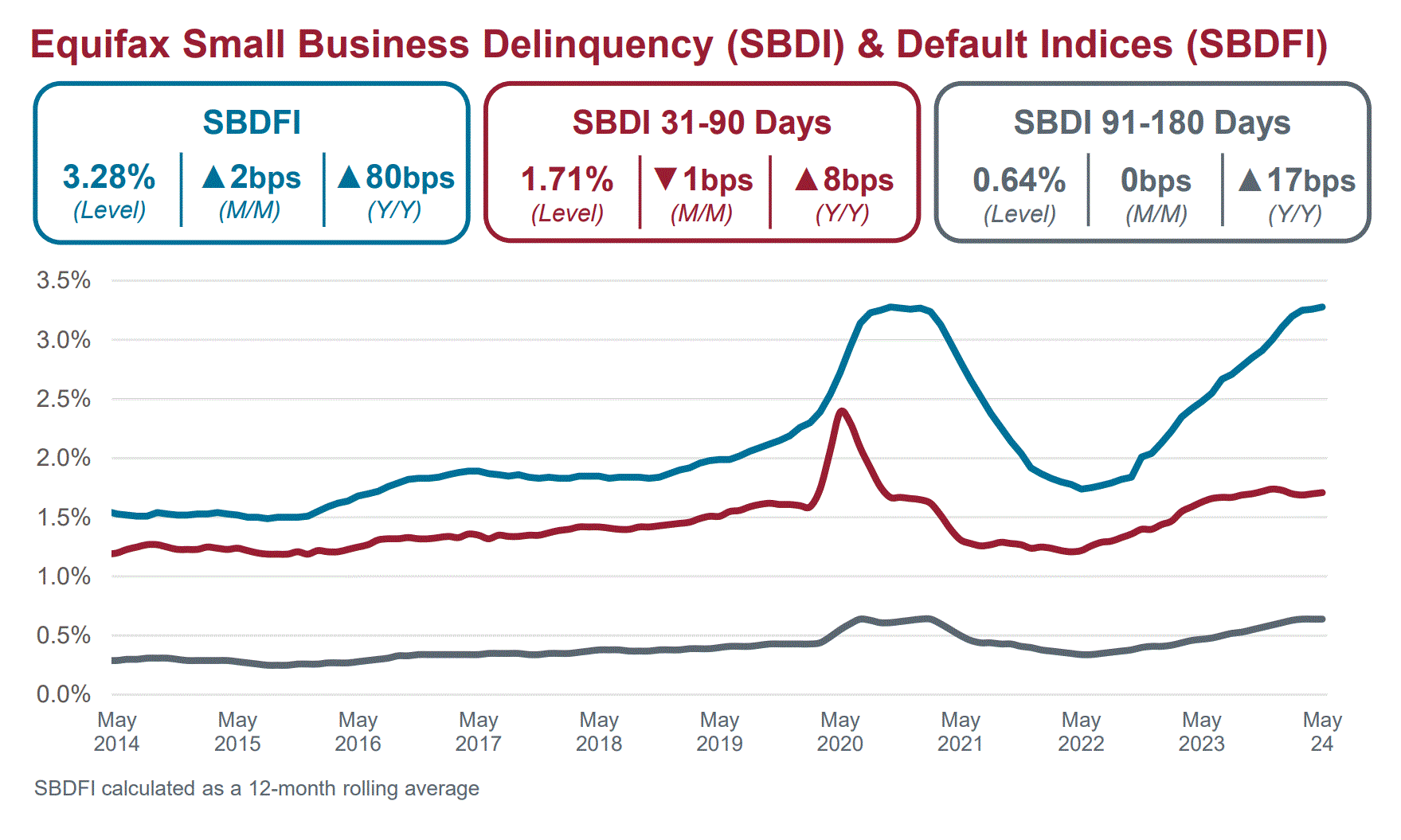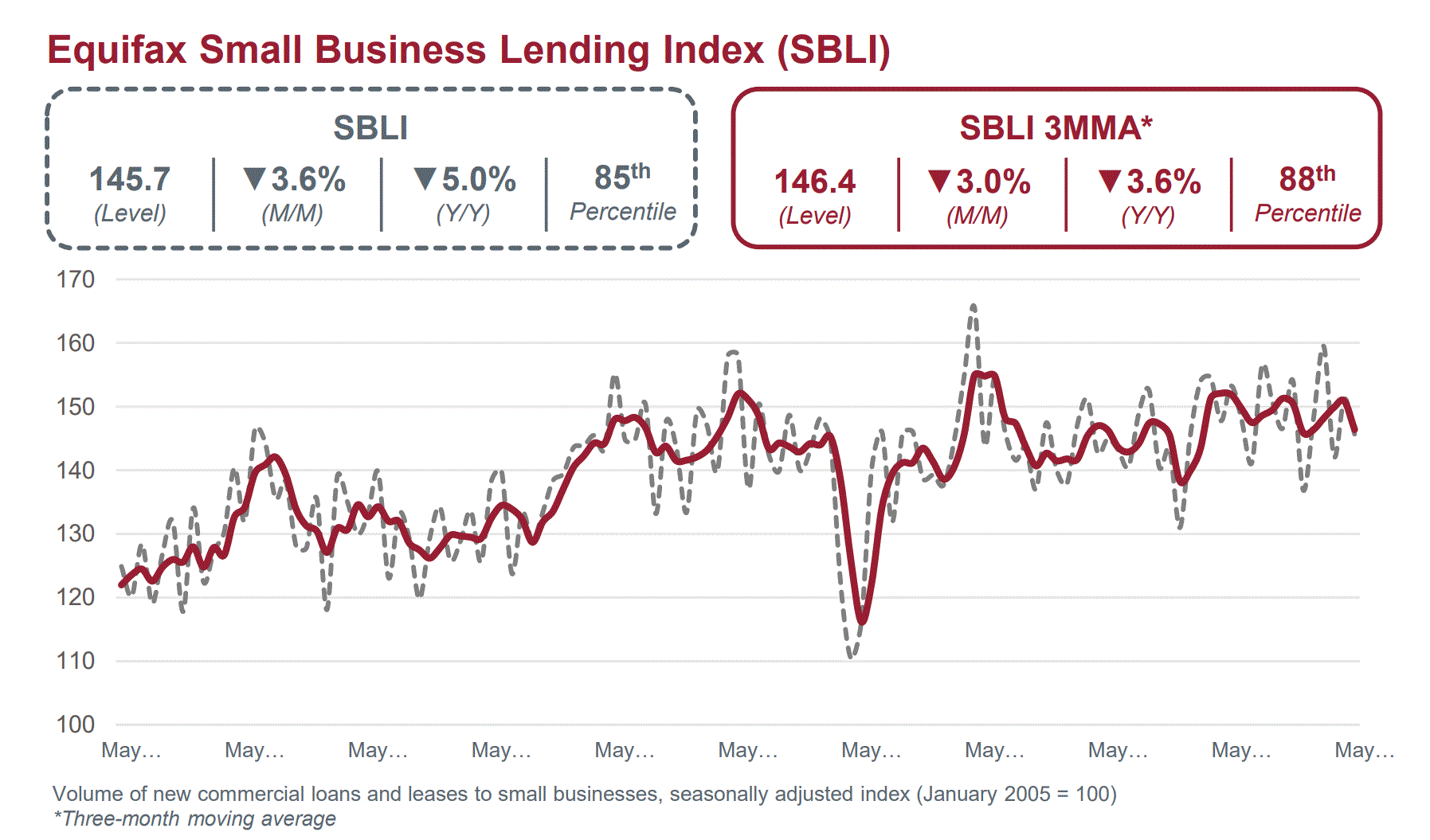What Now? How Lenders, Service Providers and Small Businesses are Responding in Q3 2024
In today's economic landscape, small businesses face a complex web of both challenges and opportunities. Market trends and financial dynamics influence these complexities. We understand there are multiple pain points, but we also see hope. Let's explore how these factors are shaping the small business environment.
Defaults and Delinquencies

The recent Small Business Indices show an increase in defaults (84 basis points year-over-year) and delinquencies (17 basis points year-over-year) among small businesses. This uptick can be attributed to decreased consumer spending and higher interest rates. The uptick impacts businesses ability to manage debt effectively.
Despite these challenges, optimism remains high among business owners. 93% of business owners expect moderate to significant growth over the next year.1 This optimism underscores the resilience and determination of small business entrepreneurs in the face of economic headwinds.
Lending Environment

From a lender's perspective, there has been a noticeable tightening in lending practices. Lenders are more critical in evaluating loan applications. This is due to constraints in available cash.
Consumer and commercial savings are down. Reduced savings is putting pressure on lenders and their ability to facilitate lending activities. In response, these lenders have shifted their focus to targeting new consumer and commercial accounts as well as upselling current customers in an effort to encourage increased deposits.
Service Providers
Based on customer feedback, service providers, like communication companies and insurance providers, are also navigating the economic shift through increased targeted marketing efforts. strategies. Service providers are leveraging data to identify growth opportunities among small businesses. At the same time, there's a heightened awareness of potential fraud risks. This prompts providers to enhance their risk management practices.
Small Business Strategies
For small business owners, accessing capital is crucial for sustainability and growth. However, the high interest rates associated with traditional business loans have led many to explore alternative sources of capital. Alternatives include third-party funding or reinvestment of personal savings and cash flow.
In terms of services, businesses are prioritizing essential needs over discretionary spending. They are focusing on proven strategies and areas of success rather than venturing into new, untested markets.
Navigating Forward
As the small business landscape continues to evolve, adaptation and strategic planning will be key. Businesses best positioned for growth:
-
effectively manage their financial obligations,
-
leverage available resources, and
-
adapt to changing consumer behaviors.
While challenges like increased defaults and stringent lending practices exist, the prevailing optimism among small business owners signals a resilient entrepreneurship. By focusing on prudent financial management and targeted growth strategies, small businesses can navigate today's economic uncertainties and thrive in upcoming quarters.
Looking for more small business lending insights?
-
Listen to the Market Pulse Podcast episode, Understanding Small Business Growth and Economic Trends
-
Bookmark the Small Business Indices: Main Street Lending Report. The link is updated monthly with the latest report
-
Check out Four key lessons for small business lenders in 2024
Sources:
1. Small Business Outlook: Latest Data Shows Nervousness Around Growth, U.S. Chamber of Commerce, July 2024
2. Small Business Indices - Main Street Lending Report, Equifax, July 2024
Recommended for you





